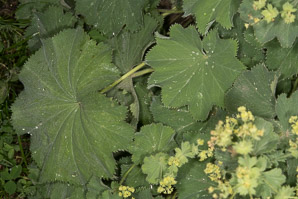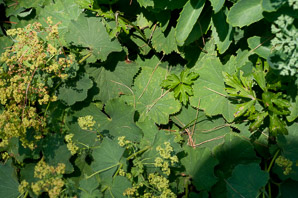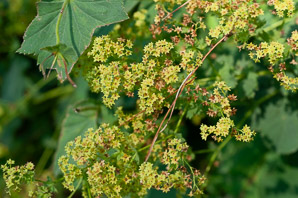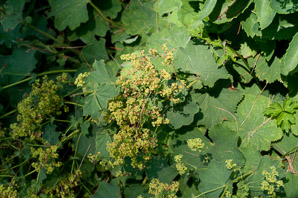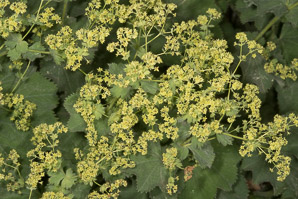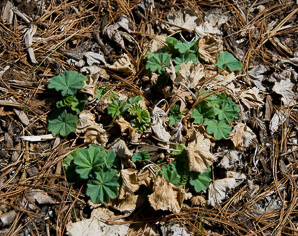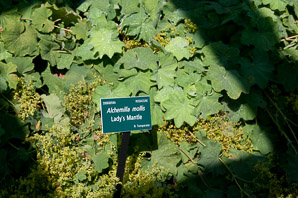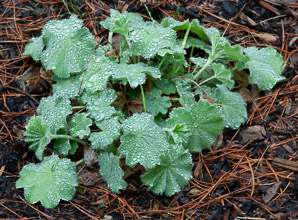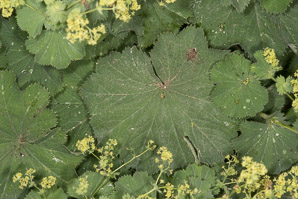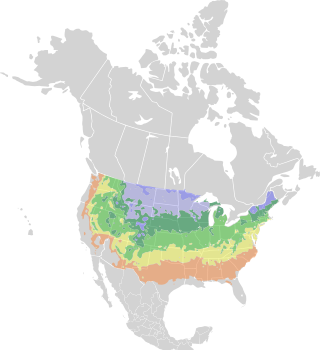
|
Alchemilla mollis (Buser) Rothm. Lady’s mantle
Lady's mantle, named after the Virgin Mary's cloak because of its scalloped leaves, originates in the eastern Carpathian Mountains in eastern Europe. Plants are low, less than 1½′ (45 cm) in height, with a width of 1½-2½′ (45-76 cm). It is often used as a ground cover. Raindrops ball up on the velvety leaves. The name of this genus, Alchemilla, derives from the alchemists' belief that the mercury-like balls of water on these leaves was the purest form of water. They used this water in their attempts to turn base metals into gold. Identification: This plant forms small mounds of scallop-edged slightly bluish leaves, with 9-11 rounded lobes edged with small sharp teeth. (The leaves look a bit like hardy geraniums.) The blooms are small and chartreuse in color. Depending upon who you ask, Alchemilla vulgaris is either a closely similar species, or the same plant. Edibility: Cattle and sheep relish this plant, and the leaves and root are said to be edible to people as well. Online References:
Plants for a Future, a resource and information centre for edible and otherwise useful plants 6/26/2017 · Beaver Brook Conservation Area, Hollis, Massachusetts · ≈ 12 × 8″ (31 × 20 cm) 7/17/2010 · Stan and Connie’s, Falmouth, Maine · ≈ 17 × 12″ (44 × 29 cm) 7/17/2010 · Stan and Connie’s, Falmouth, Maine · ≈ 7 × 4½″ (17 × 11 cm)
Alchemilla mollis description by Thomas H. Kent, last updated 25 May 2020. © FloraFinder.org. All rights reserved. |
7/17/2010 · Stan and Connie’s, Falmouth, Maine · ≈ 15 × 10″ (39 × 26 cm) 6/26/2017 · Beaver Brook Conservation Area, Hollis, Massachusetts · ≈ 10 × 6″ (24 × 16 cm) 4/24/2007 · Tom and Susan’s, Pepperell, Massachusetts 8/1/2009 · Coastal Maine Botanical Gardens, Boothbay, Maine · ≈ 2 × 1½′ (66 × 44 cm) 5/17/2007 · Tom and Susan’s, Pepperell, Massachusetts 6/26/2017 · Beaver Brook Conservation Area, Hollis, Massachusetts · ≈ 12 × 8″ (31 × 20 cm) Range: Zones 3a-8b:
|
